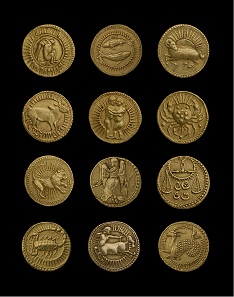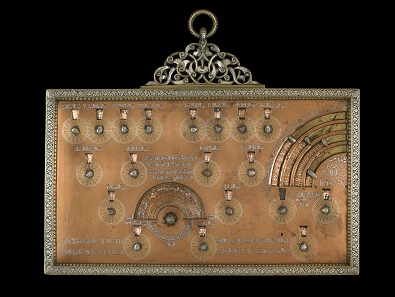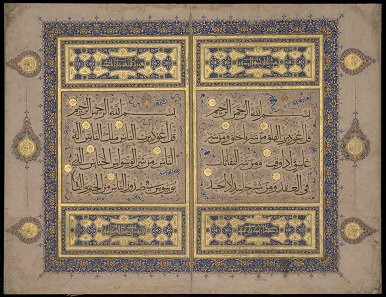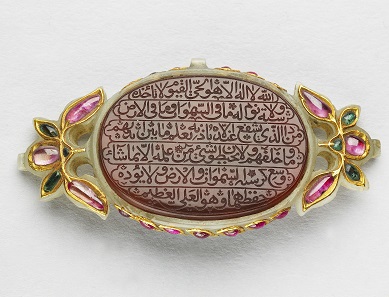December 8, 2016 – Showcasing over a hundred spectacular objects from Morocco to China, “Power and Protection” is the first major exhibition to explore the supernatural in the art of the Islamic world. Within Islamic societies, people of all backgrounds have engaged in fascinating and sometimes controversial practices such as the casting of horoscopes and the interpretation of omens. Displaying works of breathtaking quality and astonishing scale, many of which have never before been seen in public, the exhibition can be seen at Oxford‘s Ashmolean Museum until January 15, 2017.
Set of 12 gold coins of Emperor Jahangir with signs of the Zodiac. From Agra, India, 1618-23. Photo: © Ashmolean Museum, University of Oxford.
“Power and Protection” includes objects and works of art from the 12th to the 20th centuries which have been used as sources of guidance and protection in both the private sphere and in dramatic events such as battles and royal births.
The Horoscope of Iskandar. From Shiraz, Iran, 141. Photo: © Wellcome Library, London.
One of the highlights of the gallery with exquisite objects focusing on astrology is the Horoscope of Prince Iskandar, grandson of Timur (or ‘Tamburlaine’). Created in 1411 when the prince was an adult, the horoscope was manipulated to suggest celestial support for Iskandar’s political aims.
Geomantic tablet. Probably from Damascus, Syria, 1241-2. Photo: © Trustees of the British Museum.
Another focus is geomancy or ‘the science of sand’ – a technique that interprets marks made in the earth. A particular highlight is an object that can be described as a 13th-century ‘computer’ designed to calculate a person’s fortune using circular dials and sliding arcs which help produce a geomantic reading.
Bifolio from a monumental Qur’an. From Egypt, c. 1370s. Photo: © Trustees of the Chester Beatty Library, Dublin.
The exhibition goes on to examine the power of the written word, particularly the Qur’an. Centre-stage in this gallery are two pages from a monumental 14th-century Qur’an from Egypt illuminated in gold and lapis lazuli, each page measuring a staggering 78 by 48 cm.
Amulet. From India, late-17th to early-18th century. Photo: © Ashmolean Museum, University of Oxford.
The final gallery focuses on the range of personal amulets and talismans created to harness and channel protective and healing powers. Amulets in the form of jewellery have prayers and symbols engraved into precious stones that have their own specific powers, each combination tailored to an individual’s need.
For more information, please visit the website of the Oxford’s Ashmolean Museum.









